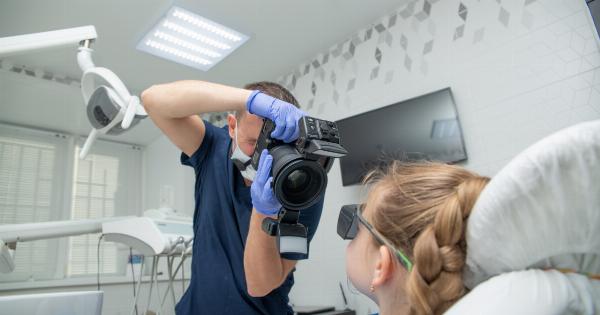Regular dental visits are crucial for maintaining good oral health throughout one’s life. While adults understand the importance of dental check-ups, it’s equally vital for children to establish dental care early on.
But when exactly should a child begin seeing a dentist regularly? Let’s explore the recommended age and frequency of dental visits for children.
1. The First Dental Visit
The American Academy of Pediatric Dentistry (AAPD) recommends that a child’s first dental visit should occur within six months after their first tooth erupts, and no later than their first birthday.
This initial dental visit allows the dentist to assess the child’s oral health and provides an opportunity for parents to receive guidance on preventive care.
2. Building a Positive Dental Experience
Early dental visits help build a positive perception of dental care in children.
By introducing them to the dental office environment and dental professionals at an early age, children become familiar and comfortable with routine dental check-ups, reducing any fear or anxiety they might associate with dental visits later in life.
3. Monitoring Proper Development
Regular dental visits allow dentists to monitor the proper development of a child’s teeth and jaw.
Dentists can identify issues like misalignment, crowding, or abnormal growth patterns early on, allowing for timely intervention and orthodontic treatment if necessary.
4. Preventing Early Childhood Caries (ECC)
Early childhood caries (ECC), also known as baby bottle tooth decay, is a common dental issue among young children.
Regular dental visits enable dentists to educate parents about the causes of ECC and provide guidance on proper oral hygiene practices and nutrition, helping prevent this condition.
5. Fluoride Treatments and Sealants
During regular dental visits, dentists may provide fluoride treatments and apply dental sealants to protect the teeth from decay.
Fluoride strengthens tooth enamel, while sealants act as a protective barrier on the chewing surfaces of the back teeth, reducing the risk of cavities.
6. Educating on Oral Hygiene
Dental visits offer an excellent opportunity to educate both children and parents about proper oral hygiene practices.
Dentists can demonstrate the correct brushing and flossing techniques and emphasize the importance of maintaining good oral health habits at home.
7. Addressing Habits and Lifestyle Factors
Dentists can also address any harmful habits or lifestyle factors that may impact a child’s oral health. These include thumb sucking, pacifier use, bottle feeding beyond infancy, and diet choices that promote tooth decay.
By addressing these issues early on, dentists can guide parents and children towards healthier habits.
8. Orthodontic Evaluation
Regular dental visits provide an opportunity for dentists to assess the need for orthodontic treatment. Many orthodontic problems can be detected during childhood and addressed at the appropriate time to ensure proper tooth and jaw alignment.
9. Monitoring Changes and Growth
As children grow, their dental needs change too. Regular dental visits allow dentists to monitor changes in the child’s oral health, including the eruption of permanent teeth, wisdom tooth development, and the need for orthodontic intervention.
Dentists can provide guidance tailored to a child’s unique dental needs at different stages of their growth.
10. Overall Oral Health Promotion
Regular dental visits for children contribute to overall oral health promotion.
They instill good oral hygiene habits, facilitate early detection and treatment of various dental issues, prevent avoidable problems, and foster a positive attitude towards dental care.
Conclusion
A child should begin seeing a dentist regularly within six months after their first tooth emerges or by their first birthday.
Early dental visits help create a positive dental experience, monitor proper development, prevent early childhood caries, and provide essential education and guidance for parents and children alike. Regular dental visits form the foundation for a lifetime of oral health and overall well-being.































